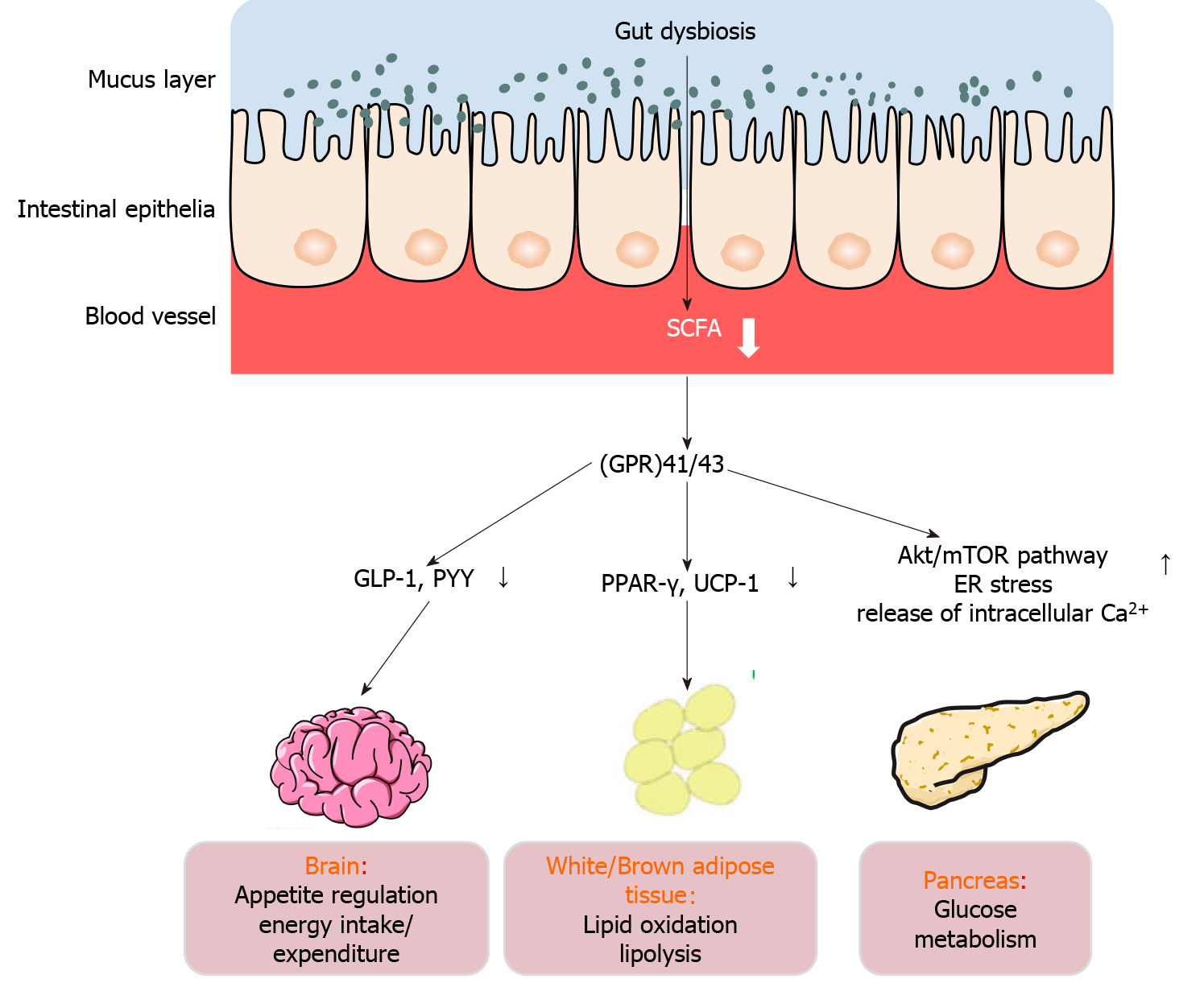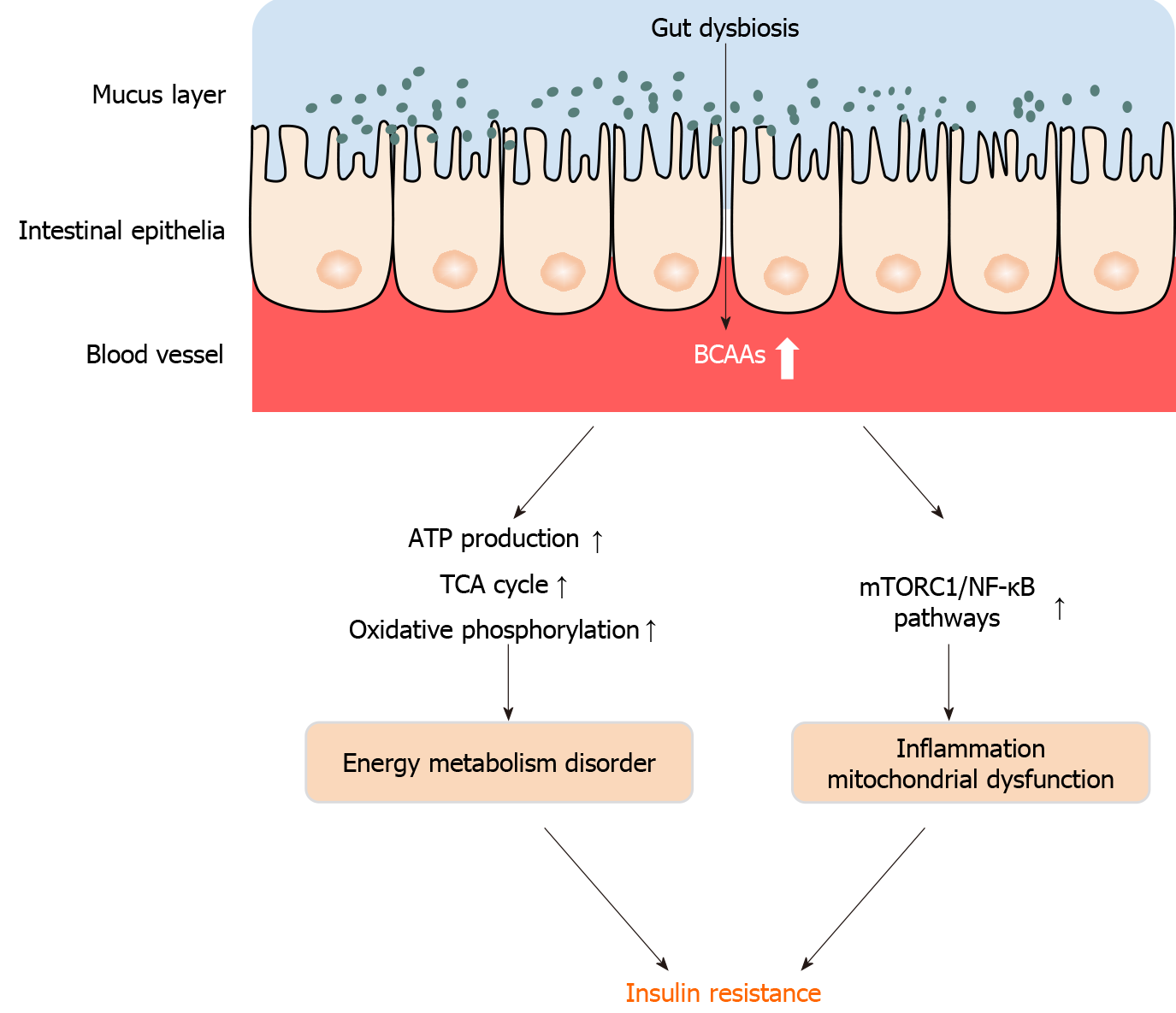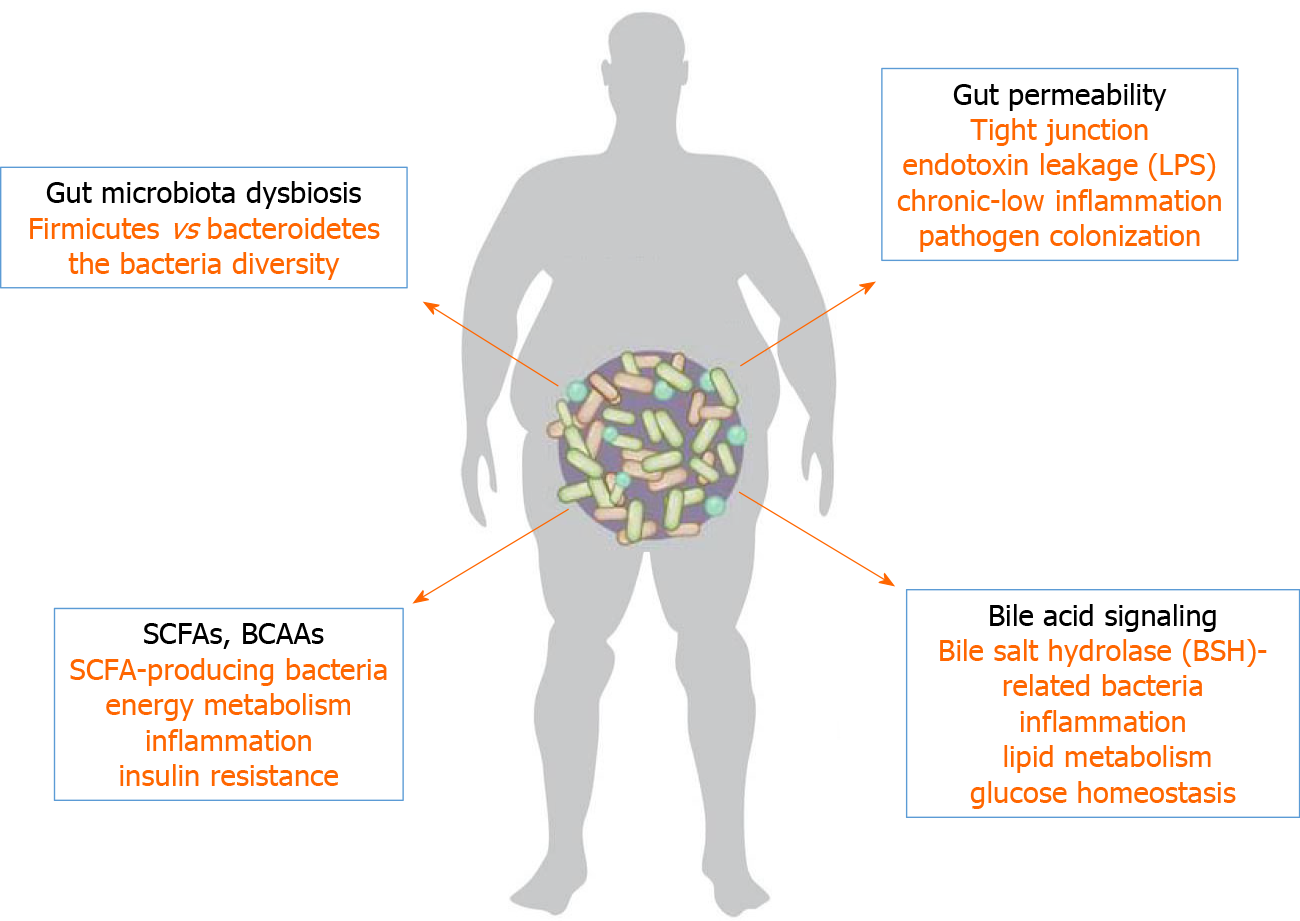Copyright
©The Author(s) 2021.
World J Diabetes. Aug 15, 2021; 12(8): 1146-1163
Published online Aug 15, 2021. doi: 10.4239/wjd.v12.i8.1146
Published online Aug 15, 2021. doi: 10.4239/wjd.v12.i8.1146
Figure 1 Mechanisms of action of short-chain fatty acids in type 2 diabetes mellitus.
The effect of short-chain fatty acids on energy metabolism is multidimensional, including appetite regulation, energy intake/expenditure, and lipid oxidation, as well as glucose metabolism. SCFA: Short-chain fatty acid; GLP-1: Glucagon-like peptide 1; PYY: Peptide YY; ER: Endoplasmic reticulum; UCP-1: Uncoupling protein-1; mTOR: Mammalian target of rapamycin.
Figure 2 Increased plasma levels of branched-chain amino acids induced by dysbiosis are closely associated with obesity and diabetes.
The accumulation of branched-chain amino acids inhibits complete oxidation of fatty acids, induces energy metabolism disorder, including ATP production, tricarboxylic acid cycle, and oxidative phosphorylation, thereby causing energy metabolism disorder, and induces inflammation by targeting nuclear factor-κB and mammalian target of rapamycin complex 1. TCA: Tricarboxylic acid; NF-κB: Nuclear factor-κB; mTORC1: Mammalian target of rapamycin complex 1; BCAAs: Branched-chain amino acids.
Figure 3 The critical role of dysbiosis/bile acids/farnesoid X receptor/TGR5 axis in diabetes mellitus.
Bile acids were synthesized by cytochrome P450 (CYP) 7A1/CYP27A1. Gut microbiota regulates the BA pool size and composition, thereby participating in energy metabolism, glucose homeostasis, lipid metabolism, and inflammation of the host by activating farnesoid X receptor/TGR5 in various tissues. BA: Bile acid; CYP: Cytochrome P450; FXR: Farnesoid X receptor; GPBAR1: G-protein-coupled bile acid receptor 1; CA: Cholic acid; CDCA: Chenodexycholic acid; GLP-1: Glucagon-like peptide 1; DCA: Deoxycholic acid; LCA: Lithocholic acid; MCA: Muricholic acid.
Figure 4 Possible mechanisms of gut microbiota in type 2 diabetes mellitus.
A variety of independent mechanisms that influence the development of diabetes mellitus via the gut microbiota are summarized. Short-chain fatty acids, branched-chain amino acids, endotoxin leakage, bile acid signaling, and gut permeability might be considered to participate in the process of type 2 diabetes mellitus. SCFAs: Short-chain fatty acids; BCAAs: Branched-chain amino acids; LPS: Lipopolysaccharide.
- Citation: Xia F, Wen LP, Ge BC, Li YX, Li FP, Zhou BJ. Gut microbiota as a target for prevention and treatment of type 2 diabetes: Mechanisms and dietary natural products. World J Diabetes 2021; 12(8): 1146-1163
- URL: https://www.wjgnet.com/1948-9358/full/v12/i8/1146.htm
- DOI: https://dx.doi.org/10.4239/wjd.v12.i8.1146












